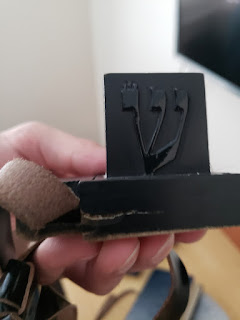Popular posts from this blog
Klaff Tanning question:
By
Rabbi Eli Gutnick
-
I received this question via email. I am not really a klaf expert, I was wondering if anyone could answer this question: Dear Rabbi Gutnick, I am writing to you because a good friend of mine has put the idea into my head that the klaf in my tefillin were not really tanned and therefore are not kosher. He referred me to Megilla 19a re diftera. From the research that I have done so far, it seems that the klaf that is used today is tanned only with a lime wash. On all of the tanning websites I’ve seen so far, they say that the lime doesn’t accomplish tanning but only the removal of the hair and some other pre-tanning effects. Would you be able to explain to me or refer me to a website that explains how the tanning process that is used today takes the hide out of the category of diftera? Thank you very much.
Rabbi Reuvain Mendlowitz clarifies his position on Ksav Chabad (and my final thoughts)
By
Rabbi Eli Gutnick
-
Last week I posted some thoughts in response to a public lecture given by Rabbi Reuvain Mendlowitz regarding Ksav Chabad (the Alter Rebbe's ksav). I felt he did not represent the issue fairly, and since I had received questions about it from a number of people I felt it made sense to write a general response. After I posted my response on this forum, Rabbi Mendlowitz reached out to me by email and we ended up having a respectful and productive email exchange regarding the relevant issues surrounding Ksav Chabad. His position is a lot clearer to me now, and I think he also took certain things on board that I clarified with him. The purpose of the Stam Forum (at least back in it's heyday before all the whats app groups took over) was to connect sofrim from around the world, to promote achdus and build bridges, as well as to offer support and advice. In that spirit, I felt I should write a follow up post, to clarify some of the issues and misconception...


I think is is kosher after the fact, only if the squareness of the stitching is still intact.
ReplyDeleteThe main things that are Meachev with regards to the batim are the square shape (ie stitching, titurah) and diagonals of the ketitzah.
Can you pls post a clearer picture of whats happening at the back corner.
ReplyDeleteThe split is not a problem
When looking at each side of the titura, it should be even and not taller on one side (not have a wedge look.
ReplyDeleteI can't tell from the image if there's a pgam on the back edge.
This is a theoretical question as the batim can and should be fixed.